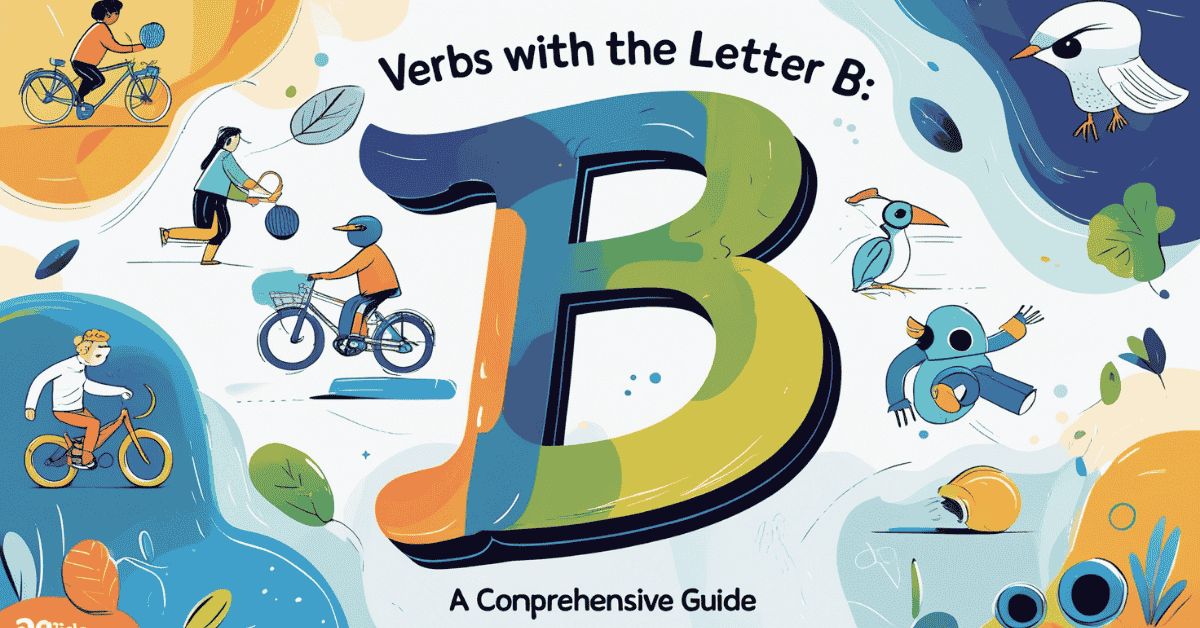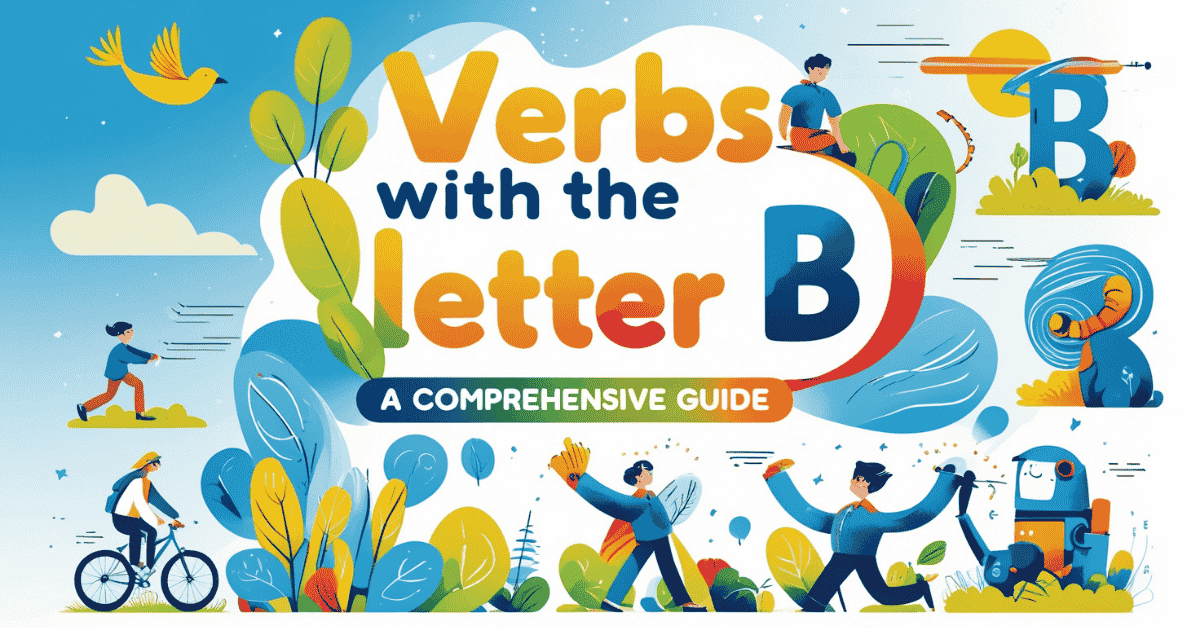Verbs form the backbone of any sentence. They express actions, states, or occurrences. Understanding verbs with the letter B helps expand vocabulary and improve communication. This guide explores their usage, types, and variations in depth.
Understanding Verbs That Start with B
Verbs that begin with B range from common to advanced. They help create dynamic sentences. Learning them enhances writing and speaking skills.
Some verbs describe actions, while others indicate states. Knowing their correct forms prevents grammatical errors. These verbs appear in everyday conversation and professional writing.
Many verbs have irregular forms. Some change entirely in past and past participle forms. Others follow standard conjugation rules, making them easier to use.
Types of Verbs Starting with B
Verbs with B belong to different categories. These include action verbs, linking verbs, and auxiliary verbs. Each type serves a unique purpose.
Action verbs show physical or mental activities. Examples include “break,” “bring,” and “build.” These verbs drive most sentences forward.
Linking verbs connect the subject with additional information. Examples include “be” and “become.” They describe states rather than actions.
Regular and Irregular B Verbs
Some B verbs follow standard past tense rules. Others have irregular forms. Knowing these differences helps in sentence construction.
Regular verbs form past tense by adding “-ed.” Examples include “bake” (baked) and “blink” (blinked). They follow predictable patterns.
Irregular verbs change forms unpredictably. Examples include “begin” (began, begun) and “bite” (bit, bitten). Memorizing these forms avoids mistakes.
Commonly Used Verbs Beginning with B
Many B verbs appear frequently in daily life. They express various actions and ideas. Learning them strengthens vocabulary and fluency.
Some common examples include:
- Be: Represents existence or identity.
- Buy: Indicates a purchase.
- Bring: Suggests carrying something.
These verbs play essential roles in different contexts. Mastering them improves communication skills.
Advanced Verbs That Start with B

Expanding vocabulary involves learning advanced verbs. These words enhance writing and speech. They add depth and variety to sentences.
Examples include:
- Beseech: Means to beg urgently.
- Brandish: Refers to waving something aggressively.
- Belittle: Indicates making someone feel small.
Using advanced verbs elevates expression. It makes language more engaging and precise.
Examples of B Verbs in Sentences
Understanding verbs requires practical examples. Seeing them in sentences clarifies their usage. Below are various examples.
- “The artist began painting at sunrise.”
- “She bought a new car yesterday.”
- “They built a treehouse for their kids.”
Observing verbs in sentences enhances retention. It ensures correct usage in real conversations.
Conjugation of B Verbs
Verb conjugation changes based on tense. Knowing these forms helps with grammar. Below is a table illustrating B verb conjugation.
| Verb | Present | Past | Past Participle |
| Begin | Begin | Began | Begun |
| Break | Breaks | Broke | Broken |
| Build | Build | Built | Built |
Conjugating verbs correctly ensures grammatical accuracy. It improves sentence structure and fluency.
B Verbs Used in Different Tenses
Tenses affect how verbs appear. Mastering them is essential for communication. Below are examples showing B verbs in different tenses.
Present Tense: “They bake delicious cakes every Sunday.” Past Tense: “He brought his books to class.” Future Tense: “She will buy a new phone next week.”
Recognizing these variations makes writing clearer. It enhances understanding of verb usage.
B Verbs in Formal and Informal Writing
Verb choice impacts writing tone. Some verbs suit formal writing, while others fit casual speech. Understanding this difference improves clarity.
Formal: “The lawyer beseeched the judge for leniency.” Informal: “I begged my friend for a ride.”
Using the right verb maintains professionalism. It ensures messages are conveyed effectively.
Fun Facts About Verbs with B
Language has many fascinating aspects. Exploring fun facts makes learning engaging. Here are some interesting details about B verbs.
- “Be” is the most used verb in English.
- Some verbs have multiple meanings. “Break” can mean to damage or pause.
- Old English influenced many modern B verbs.
These facts highlight the depth of the English language. They make studying verbs more enjoyable.
FAQs
Q: What are some common verbs that start with B?
A: Examples include “be,” “buy,” “bring,” “build,” and “break.”
Q: Are there any irregular verbs with B?
A: Yes, verbs like “begin,” “bite,” and “bend” have irregular forms.
Q: How can I remember verb conjugations?
A: Practice using verbs in different sentences. Flashcards can also help.

